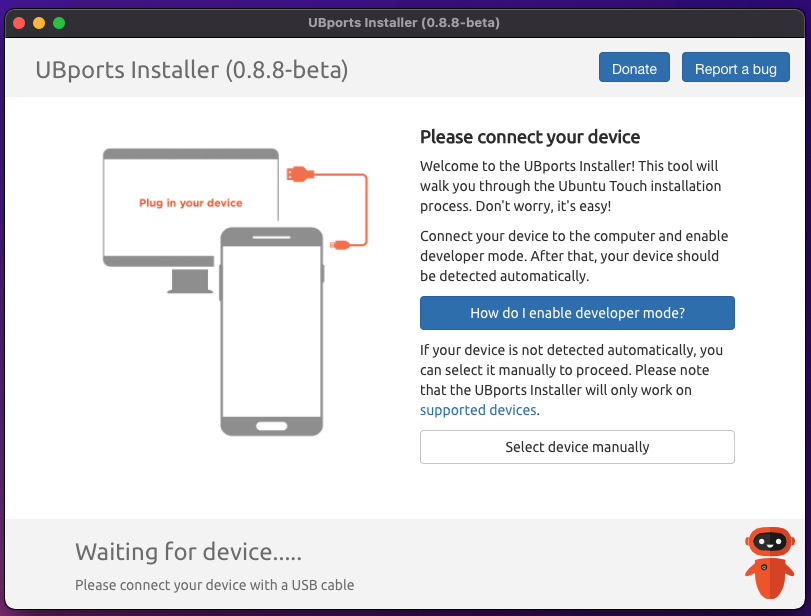

- CAN T INSTALL UBUNTU FROM USB HOW TO
- CAN T INSTALL UBUNTU FROM USB DRIVERS
- CAN T INSTALL UBUNTU FROM USB UPDATE
- CAN T INSTALL UBUNTU FROM USB UPGRADE
- CAN T INSTALL UBUNTU FROM USB PRO
Once it is downloaded, open the Downloads folder, and execute the installer file. To begin with UNetbootin and start playing with it, first, visit the official website of UNetbootin to Download it:Ĭhoose the appropriate installer file based on your operating system.
CAN T INSTALL UBUNTU FROM USB HOW TO
We will install Ubuntu 20.04 LTS operating system along with the Windows 10 operating system using the UNetbootin software and learn all about how to use the Unetbootin utility to install any operating system without having a USB or CD Drive. UNetbootin, the abbreviation of “Universal Netboot Installer,” is a well-recognized and cross-platform software used for creating a live USB system and install a lot of Linux-based or any other operating systems without a USB Drive or CD Drive. But apart from all these options available, this post contains a step-by-step guide on how to install Ubuntu operating system without having a USB Drive or CD Drive in a system.Ī prevalent and well-known software is used to install operating without a USB, known as Unetbootin. In addition, Ubuntu provides ISO Image to install it on any system, and we can either burn it on a CD Drive or a USB Drive to make it a bootable device and install Ubuntu using it. The graphical installation of Ubuntu is effortless and straightforward, just like installing any other well-maintained operating system. After every two years, a new LTS release of the Ubuntu operating system is released. Due to its vast support and demand, it has a good community for maintaining this distro. It is maintained by Canonicals, and due to its good reputation and low hardware requirements, it is supported and used by many prominent organizations.

CAN T INSTALL UBUNTU FROM USB PRO
It is a Debian-based operating system enriched with all the features needed by a professional IT pro or a casual user for daily routine tasks. Use of livecd-iso-to-disk on any distribution other than Fedora is unsupported and not expected to work: please use an alternative method, such as Fedora Media Writer.From more than 600 Linux-based operating systems, Ubuntu is the most popular and top priority operating system of users from all over the world. Even if it happens to run and write a stick apparently successfully from some other distribution, the stick may well fail to boot. Livecd-iso-to-disk is not meant to be run from a non-Fedora system. livecd-iso-to-disk on other Linux distributions If your test boot reports a corrupted boot sector, or you get the message MBR appears to be blank., you need to install or reset the master boot record (MBR), by passing -reset-mbr when writing the stick. If you get this message from fdisk, you may need to reformat the flash drive when writing the image, by passing -format when writing the stick. Partition has different physical/logical endings If you get the message Need to have a filesystem label or UUID for your USB device, you need to label the partition: dosfslabel /dev/sdX LIVE.
CAN T INSTALL UBUNTU FROM USB UPDATE
Information: Don't forget to update /etc/fstab, if necessary. Number Start End Size Type File system Flagsġ 32.3kB 1062MB 1062MB primary fat16 boot Sector size (logical/physical): 512B/512B Welcome to GNU Parted! Type 'help' to view a list of commands.
CAN T INSTALL UBUNTU FROM USB DRIVERS
CAN T INSTALL UBUNTU FROM USB UPGRADE

Getting started with Apache HTTP Server.Managing keyboard shortcuts for running an application in GNOME.Controlling network traffic with firewalld.Displaying a user prompt on the GNOME login screen.Understanding and administering systemd.Performing administration tasks using sudo.Configuring networking with NetworkManager CLI (nmcli).Disabling the GNOME automatic screen locking.Setting a key shortcut to run an application in GNOME.Configuring Xorg as the default GNOME session.Configuring X Window System using the nf file.Installing Chromium or Google Chrome browsers.Installing plugins for playing movies and music.APT command equivalents on Fedora with DNF.Securing the system by keeping it up-to-date.Adding or removing software repositories in Fedora.Finding and installing Linux applications.Creating and using a live installation image.


 0 kommentar(er)
0 kommentar(er)
